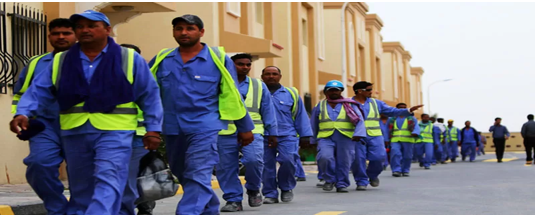INP-WealthPk
Farooq Awan
Pakistan’s labour force has increased to 85.6 million during 2024-25, reflecting significant changes in participation rates, employment levels and demographic engagement across provinces and gender groups, according to fresh national estimates.
The Labour Force Survey 2024-25, the 37th round of the series conducted by the Pakistan Bureau of Statistics, presents detailed findings on labour force participation rates, employment and unemployment indicators, sectoral employment distribution, and demographic trends.
According to the Labour Force Survey 2024-25 document available with Wealth Pakistan, the labour force includes all persons aged ten years and above who were employed or unemployed during the reference week and also incorporates 2.48 million own-use producers for comparability with earlier surveys.
The survey shows that the labour force expanded from 71.8 million in 2020-21 to 85.6 million in 2024-25 when measured using the 13th International Conference of Labour Statisticians framework. This indicates an annual addition of around 3.5 million persons entering the labour market. Under the 19th ICLS definition, which excludes own-use subsistence agriculture producers, the total labour force stands at 83.1 million.
Of this, 63.2 million are male and 19.9 million are female, highlighting the continued gender gap in labour market participation. The labour force participation rate, measured as the proportion of the population aged ten years and above that is either employed or unemployed, has risen from 44.9 percent in 2020-21 to 47.7 percent in 2024-25. Participation among males increased from 67.9 percent to 69.8 percent, while female participation rose from 21.4 percent to 24.4 percent.
The survey records increases in both rural and urban labour force participation rates. Rural areas witnessed an increase from 48.6 percent to 52.3 percent, whereas urban participation rose from 38.8 percent to 40.8 percent. Under the 19th ICLS standards, the labour force participation rate is 46.3 percent overall, with male participation at 68.7 percent and female participation at 22.7 percent.
The report also highlights age-wise labour force composition. For the youth aged 15 to 24, participation increased from 43.8 percent in 2020-21 to 45.4 percent in 2024-25. Similarly, the participation rate for the 15 to 64 working-age population increased from 54.7 percent to 57.3 percent. The data reflects the demographic structure of the country, where a large proportion of the population is young and entering the labour market.
The provincial analysis in the survey indicates varying levels of labour force engagement. The survey covers all four provinces and Islamabad and is based on a large sample of 53,974 households drawn from 3,796 primary sampling units. The sampling design includes an urban and rural breakdown, ensuring a representative national picture. Census 2023 data adjusted with an annual population growth rate of 2.075 percent were used to compute the estimated population figures required to derive key indicators.
The methodology section of the report explains that the survey was conducted through direct household interviews, with data collected electronically using tablets to improve accuracy and consistency. Field operations were carried out over four quarters from July 2024 to June 2025, enabling the survey to capture seasonal variations in employment patterns.
The document notes that Pakistan has adopted revised labour definitions under the 19th ICLS to align with international standards. However, for comparability with previous surveys, indicators such as labour force participation rate, employment numbers and unemployment rate are also reported under the older 13th ICLS definition. This dual reporting provides clarity for tracking changes over time.
The increase in the labour force, reflected in both absolute numbers and participation rates, marks a significant shift captured by the Labour Force Survey 2024-25. The findings provide a detailed picture of Pakistan’s labour market and will serve as a key input for policymakers, planners and researchers working on employment, demographic trends and economic analysis.

Credit: INP-WealthPk












